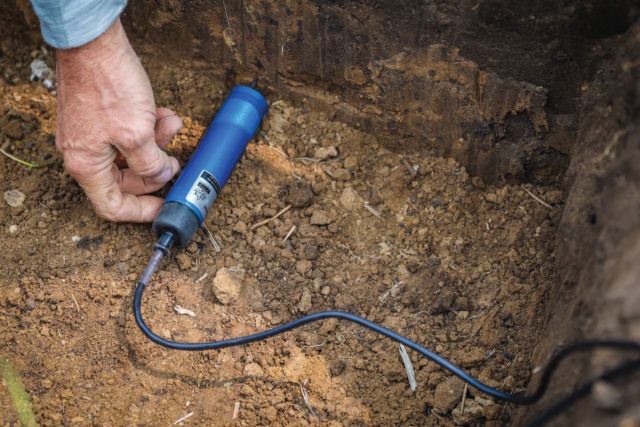
By Brianna Gratton
Sensors in farming is not a new concept. While equipment has made huge advancements through the years, measuring the field conditions and environment has taken longer to develop. The soil and crop interaction is complex but with these data insights the ability to connect to your fields in a seamless matter is becoming a reality.
With a multitude of new sensors entering the market with the capability to measure in-field conditions and soil properties, comes the question are they worth the time and money? One of the challenges for a producer is to determine which sensors will bring value to the farm, and will they consistently provide accurate and reliable reading in broad acre dryland farming situations.
Integrating this technology involves a significant investment and there is minimal third-party data comparing the accuracy and functionality of these devices. The Olds College Smart Farm is currently testing and validating sensor technology. By placing a variety of sensors in a clustered format in the field we can compare the accuracy between each sensor as well as in season sampling to determine which are most valuable in our western Canadian environment.
Currently at the Smart Farm, we have weather stations, microclimate sensors, multiple soil moisture and temperature sensors, canopy temperature sensors and light interception sensors installed in different fields for monitoring. We intend to add additional microclimate sensors and soil nutrient sensors in the coming season.
When comparing these we look at the accuracy of the data provided, how the data is provided and what actionable insights are offered. Through this we can adapt our strategies to the changing conditions in the field. This gives producers the ability to react quickly to real-time information, allowing them to maximize effectiveness of the inputs and improve crop performance.
Additional factors we have taken into consideration when evaluating these devices is ease of installation and connectivity, specifically how the different methods of installation of soil sensors may affect the readings. Comparing a sensor that is inserted into the ground by digging a trench and laying the horizontal sensors at different depths versus a vertical device that is tapped directly into the soil will show how the soil disturbance is affecting the data gathered.
Through our validation projects we have encountered different issues with different devices, including issues with connectivity and data logging, and devices standing up to adverse weather conditions such as cold temperatures and snow that often occur in this area. Many devices use different algorithms to determine their values which in turn results in different readings between them. Placement has also played a large role in the accuracy of the data. In the coming year we will be looking at determining what the optimal distribution is for these sensors, with that comparing what the return is on having a number of sensors in a single field versus using methods that are extrapolating information from one spot to make management decisions on the entire field.
The value of comparing the accuracy of each sensor allows producers to determine cost and benefit of adding technology to the farm. When the sensors are accurate in reading moisture, environment and soil available nutrients it allows for faster more accurate decision making in season. When weather conditions are favourable, being able to react quickly can allow a farmer to capture yield or respond to a negative event and improve crop response as soon as conditions change.










